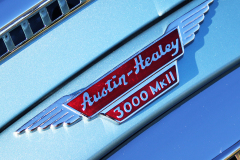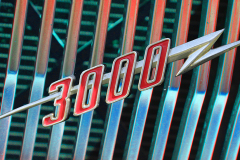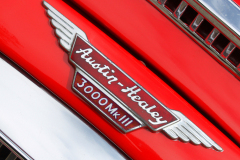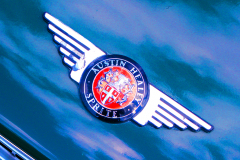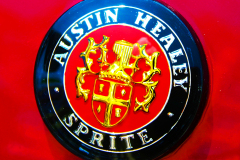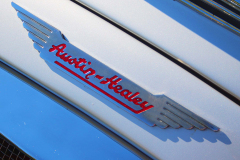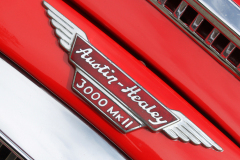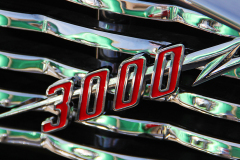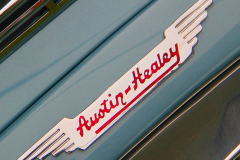Austin Healey
Austin-Healey was a British sports car maker established in 1952 through a joint venture between the Austin division of the British Motor Corporation (BMC) and the Donald Healey Motor Company (Healey).
Austin-Healey cars were produced until 1972 when the 20-year agreement between Healey and Austin came to an end.
The Austin-Healey 100 is a two seater sports car that was built in two series BN1 (1953-1955) and BN2 (1955-1956). The “100” was named for the car’s ability to reach 100 mph. In 1955, a high-performance 100M model was introduced. Also the aluminum-bodied “100S” (for Sebring) model was built primarily with racing in mind.
The Austin-Healey 100-6 was a roadster offered in a 2+2 version (BN4) (1956-1959) and 2 seater (BN6)(1958-1959).The 100-6 was a major redesign and replacement for the100. The 100-6 featured a longer wheelbase and a more powerful 2.6 liter, straight-six engine. The body lines were slightly streamlined, a smaller, wider radiator grille placed lower, an air scoop was added to the bonnet, a fixed windshield and two occasional seats added (an option in 1958).
The (1956-1961) two seater Austin-Healey 3000 MK1 (BN7) and 2+2 (BT7) had a larger 3-litre engine and disc brakes for its front wheels. Other changes were minor. Weather protection remained minimal, a folding plastic roof on a light demountable frame and detachable side screens above the doors holding sliding perspex panels. Wire wheels, overdrive gearbox, laminated windscreen,heater, adjustable steering column, detachable hard top for the 2+2, and two-tone paint were available as options.
The (1961-1962) Austin-Healey MKII, also available in two seater and 2+2 versions, was fitted with three SU HS4 carburettors, an improved camshaft and a vertical barred front grille. A brake servo was also available as an optional extra, which greatly improved braking performance.
The (1962-1963) MKII 3000 sports convertible (BJ7) was a true convertible with almost saloon car comfort. It had a new wrap-around windscreen, wind-up side windows, swiveling quarter lights and a quick-action folding roof. Twin SU HS6 carburettors replaced the triple. Austin-Healey claimed it could exceed 115 mph. 91.5 per cent of all 1963 Austin Healey 3000 cars were exported, mostly to North America.
The (1964-1968) Austin-Healey Mark III sports convertible (BJ8 – Phase 1 and Phase II) had increased power with a new higher lift camshaft and SU HD8 carburettors replacing the HS6 units. Power-assisted braking became standard instead of optional. The car’s fascia now displayed its speedometer and tachometer directly in front of the driver and upholstery was now in Ambla vinyl..
The Austin-Healy 100, 100-6 and, 3000 series have become known as the Big Healeys – to distinguish them from the much smaller Austin-Healey Sprite.

